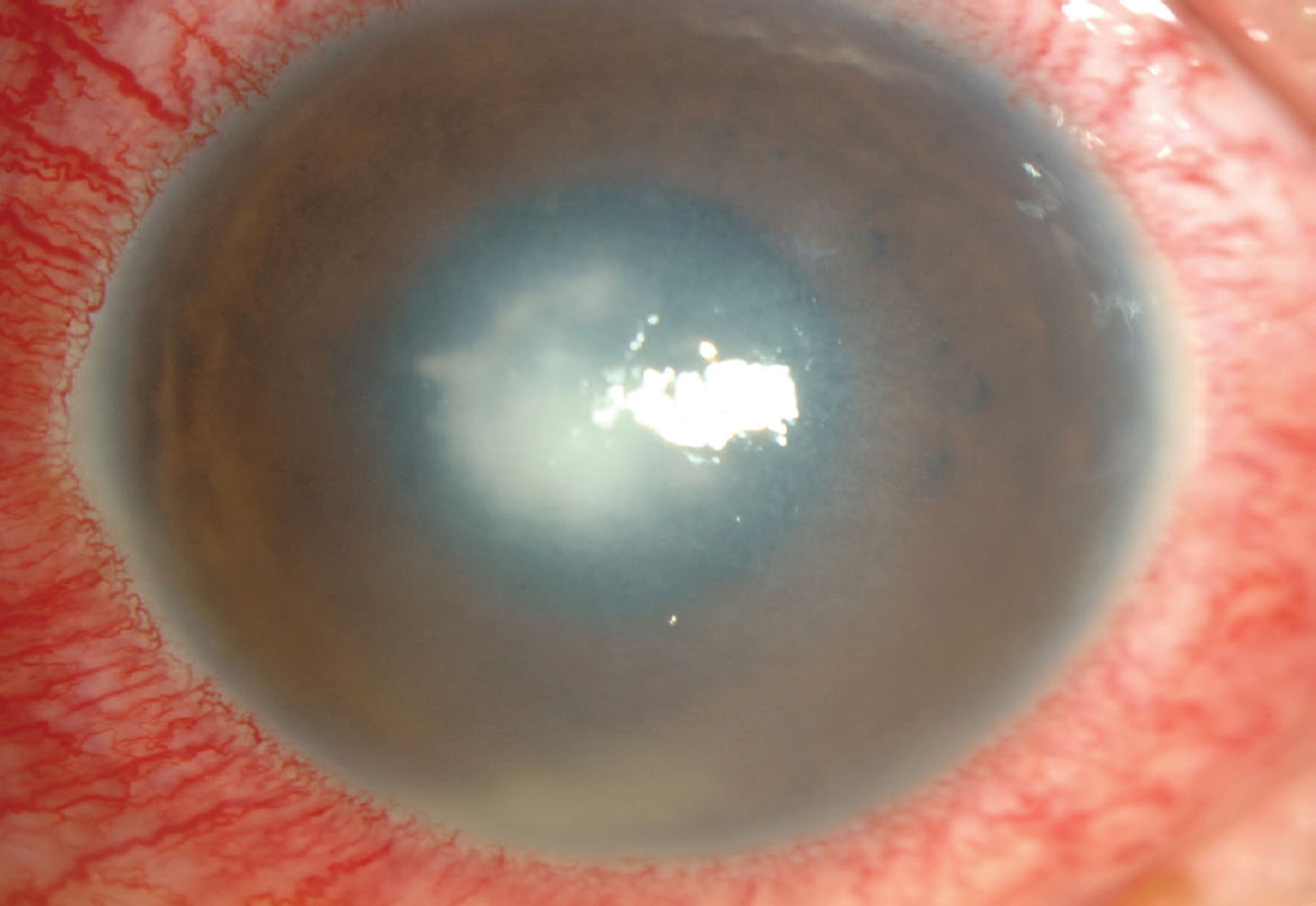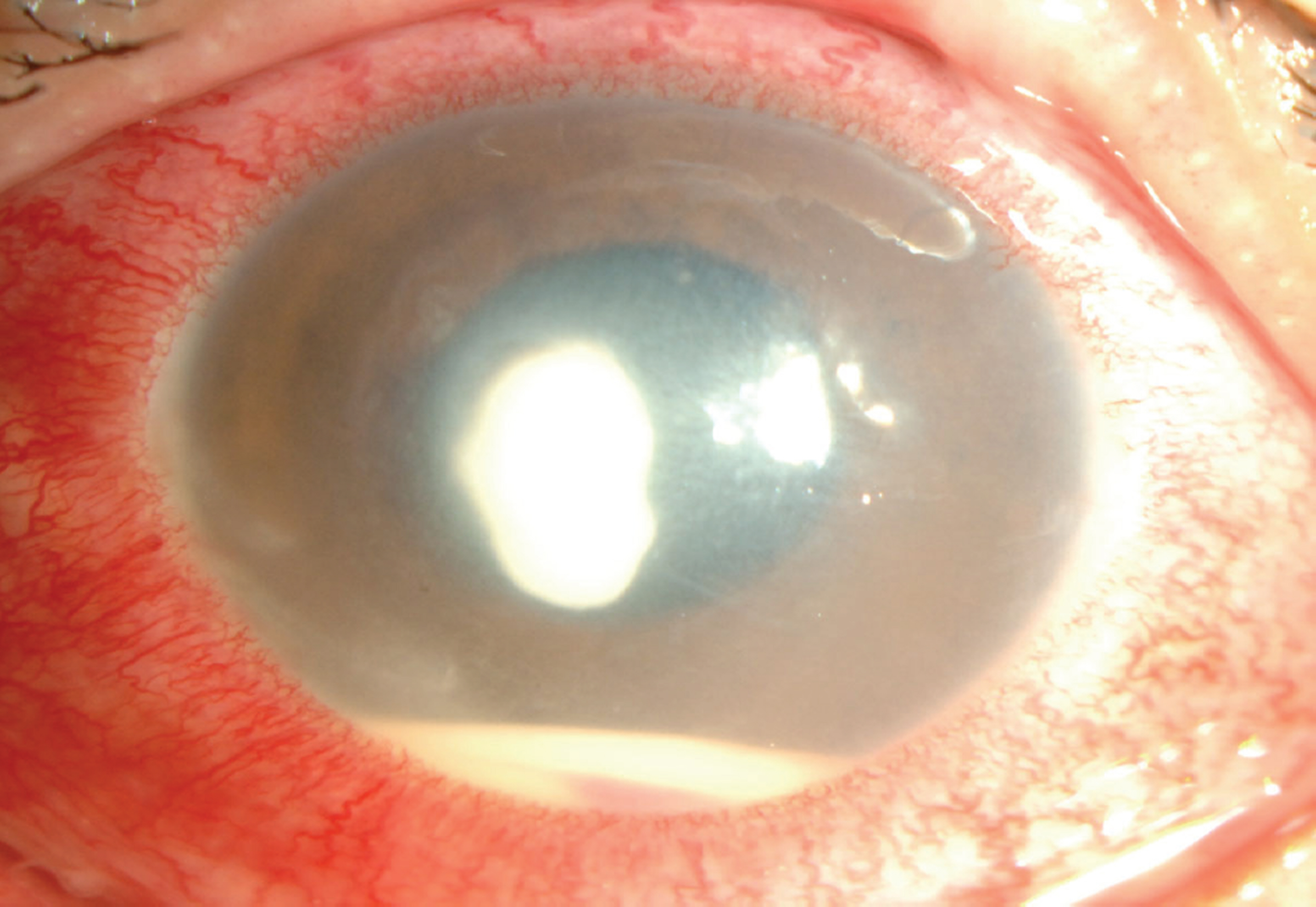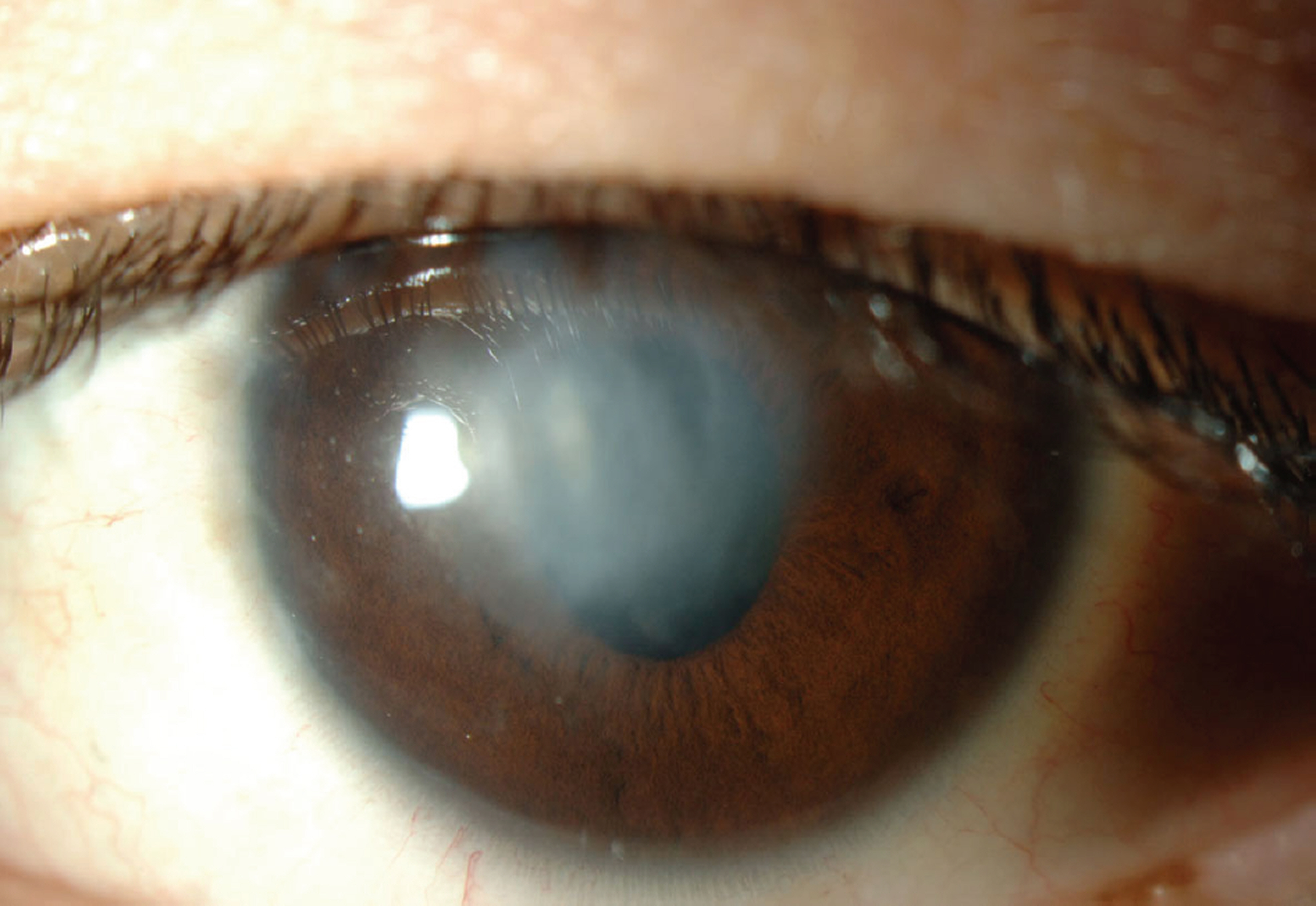J Korean Ophthalmol Soc.
2008 Oct;49(10):1680-1684.
A Case of Fungal Keratitis Treated with Voriconazole
- Affiliations
-
- 1The Institute of Vision Research, Department of Ophthalmology, Yonsei University College of Medicine, Seoul, Korea. tikim@yuhs.ac
Abstract
- PURPOSE
To report drug-resistant fungal keratitis that was treated with voriconazole.
CASE SUMMARY
A 31-year-old man was admitted to hospital because of ocular pain, conjunctival injection, and visual weakness 7 days after LASIK surgery. At that time, his vision was counting finger at 30 cm and he presented with corneal epithelial defects, stromal infiltration, and inflammation in the anterior chamber of his eye. He was transferred to our hospital because his infection was resistant to gatifloxacin, tobramycin, amphotericin B, and natamycin eyedrops. At the time of transfer, his vision was counting finger at 30 cm and he presented with corneal epithelial defects, stromal infiltration, and hypopyon. He was treated with topical 2% voriconazole every 2 hours and the lesion improved. However, the hypopyon recurred after 12 days. He was then treated with intracameral voriconazole injection (50 microgram/0.1 cc) and topical 5% voriconazole every hour causing the hypopyon to disappear. His vision improved from counting finger to 20/40 six months after this treatment.
MeSH Terms
-
Adult
Amphotericin B
Anterior Chamber
Eye
Fingers
Fluoroquinolones
Humans
Inflammation
Keratectomy, Subepithelial, Laser-Assisted
Keratitis
Keratomileusis, Laser In Situ
Natamycin
Ophthalmic Solutions
Pyrimidines
Tobramycin
Triazoles
Vision, Ocular
Amphotericin B
Fluoroquinolones
Natamycin
Ophthalmic Solutions
Pyrimidines
Tobramycin
Triazoles
Figure
Reference
-
References
1. Chen WL, Wu CY, Hu FR, Wang IJ. Therapeutic penetrating keratoplasty for microbial keratitis in Taiwan from 1987 to 2001. Am J Ophthalmol. 2004; 137:736–43.
Article2. Alfonso EC, Rosa RH, Miller D.Fungal keratitis. Cornea. 2nd ed. Vol. 2. Philadelphia: Elsevier Mosby;2005:p. 1101–22.3. Sabo JA, Abdel-Rahman SM. Voriconazole: a new traizole antifungal. Ann Pharmacother. 2000; 34:1032–43.4. Johnson L, Kauffman C. Voriconazole: a new traizole antifungal agent. Clin Infect Dis. 2003; 36:630–7.5. Nulens E, Eggink C, Rijs AJ. . Keratitis caused by Scedosporium apiospermum successfully treated with a cornea transplant and voriconazole. J Clin Microbiol. 2003; 41:2261–4.6. Klont RR, Eggink CA, Rijs AJ. . Successful treatment of Fusarium keratitis with cornea transplantation and topical and systemic voriconazole. Clin Infect Dis. 2005; 40:110–2.7. Shah KB, Tzu GW, Wilhelmus KR, Jones DB. Activity of voriconazole against corneal isolates of Scedosporium apiosper- mum. Cornea. 2003; 22:33–6.8. Reis A, Sundmacher R, Tintelnot K. . Systemic treatment if ocular invasive mould infection (fusariosis) with the new antifungal agent voriconazole. Br J Ophthalmol. 2000; 84:932–3.9. Sen P, Gopal L, Sen PR. Intravitreal voriconazole for drug- resistant fungal endophthalmitis: case series. Retina. 2006; 26:935–9.10. Scott IU, Cruz-Villegas V, Flynn HW Jr, Miller D. Delayed- onset, Bleb-associated Endophthalmitis Caused by Lecythophora mutabilis. Am J Ophthalmol. 2004; 137:583–5.11. Kramer M, Kramer MR, Blau H. . Intravitreal Voriconazole for the Treatment of Endogenous Aspergillus. Endophthalmitis Ophthalmology. 2006; 113:1184–6.12. Hariprasad SM, Mieler WF, Holz ER. . Determination of vitreous, aqueous, and plasma concentration of orally admini- stered voriconazole in humans. Arch Ophthalmol. 2004; 122:42–7.13. Kim YJ, Choi SI, Kim WJ. Suspected Fungal Keratitis After LASIK: Treated with Flap Removal and Medical Therapy. J Korean Ophthalmol Soc. 2001; 42:1626–31.14. Hahn YH, Lee DJ, Kim MS. . Epidemiology of Fungal Keratitis in Korea: A Multi-center Study. J Korean Ophthalmol Soc. 2000; 41:1499–508.15. Park SH, Kim MS. A Case Report of Intracameral Amphotericin B Injection in the Management of Deep Keratomycosis. J Korean Ophthalmol Soc. 2004; 45:681–5.16. Lee SB, Park CJ, Kim JY. A Case of Intravitreal Voriconazole for the Treatment of Drug-resistant Penicillium Endophthal- mitis. J Korean Ophthalmol Soc. 2007; 48:1583–87.
- Full Text Links
- Actions
-
Cited
- CITED
-
- Close
- Share
- Similar articles
-
- Topical and Oral Voriconazole in the Treatment of Fungal Keratitis
- Management of Fungal Ocular Infection with Topical and Intracameral Voriconazole
- Clinical Efficacy of Topical Voriconazole as Treatment in Culture-Positive Fungal Keratitis
- Clinical Effects of Intracameral Voriconazole Injection in Patients with Fungal Keratitis Refractory to Conventional Treatment
- A Case of Fungal Keratitis Scedosporium apiospermum





